The large tilapia fish feed factory for producing commercial tilapia feed project is designed with 3 fish feed processing lines, 2 extruded fish feed production lines with an annual output of 30,000 tons and 1 fish pellet feed processing line with an annual output of 40,000 tons, with a total annual production capacity of 100,000 tons.

According to statistics, in 2015, the output of feed in Hainan Province, China, where this tilapia fish feed factory project is located, was 1.599 million tons, with a total output value of 4.045 billion yuan (635,065,000USD), a year-on-year increase of 10.4% and 3.4% respectively, and aquaculture feed was 293,100 tons, a year-on-year increase of 13.4%.
The output of aquatic feed is far from meeting the demand of aquatic product output. Therefore, the rapid development of Hainan's aquatic industry has put forward higher demand for the feed industry.
Name:
Tilapia fish feed produciton factory project
Country:
China
Date:
May 2016
Capacity:
48T/H
Feed Size:
1-4mm
The install period:
150 Months
Control Mode:
Automatic
Fish feed plant cost:
2,826,000 USD

Aerial view of the 48t/h fish feed factory project
In order to speed up the development of the aquaculture industry, increase the income of farmers, and improve the competitiveness of agriculture, the market vigorously develops the aquatic feed processing industry. This large fish feed factory project was proposed under this background.
The large-scale automatic fish feed production line project invested and constructed by the client company, Baiyang Fish Feed Company, is located in Wenchang City, Hainan Province, mainly producing food for tilapia.
The best solution large capacity tilapia fish feed factory for producing commercial tilapia feed project is designed with 3 fish feed processing lines, 2 extruded fish feed production lines with an annual output of 30,000 tons and 1 fish pellet feed processing line with an annual output of 40,000 tons, with a total annual production capacity of 100,000 tons.
The original land and house of this project originally belonged to another company—— Hainan Yubao Feed Co., Ltd. However, due to the adjustment of the investment direction of the company, in January 2018, the entire fish feed factory and fish feed making equipment and other ancillary facilities were sold to this best solution industrial scale tilapia fish feed factory project customer - Hainan Baiyang Fish Feed Ltd.

Therefore, this industrial scale 48t/h tilapia fish feed factory for producing commercial tilapia feed project was based on the transformation of the original factory, and a new extruded fish feed processing line was added, and the related construction and trial production has been completed in May 2019.
According to the needs of production, the 48t/h fish feed factory project works 260 days a year and implements a shift system of 8 hours per shift.
The large scale fish feed factory project has a workforce of 30 people, 20 of whom live in the factory. It can be calculated that the output of this big capacity fish feed factory project is 8333t/m, 385t/d, 48t/h (20-21t/h for tilapia food pellets, 28-29 t/h for tilapia floating fish feed).
Baiyang Fish Feed Factory Project covers an area of about 13333.33m² and a total construction area of about 9405.98m², including production workshops, warehouses, office and living buildings, dormitory buildings and other supporting facilities.
| Item | Quantity | Notes |
|---|---|---|
| 1. Land area | 13333.33m² | |
| 2. Gross Floor Area | 9405.98m² | |
| (1) Workshop | 4012.58m² | Five-story brick-concrete structure |
| (2) Warehouse | 4262.77m² | Single-story steel-concrete structure |
| (3) Office and Living Building | 660.24m² | Two-story brick structure |
| (4) Dormitory Building | 443.64m² | Single-story brick-concrete structure |
| (5) Other supporting facilities | 26.75m² | Guardian, restroom, etc. |
| 3. Green area | 400m² | |
| 4. Parking Spaces | 15 |
| No. | Name | Production (tons/year) |
|---|---|---|
| 1 | Tilapia pellets | 40000 |
| 2 | Tilapia extruded feed | 60000 |
The large scale 48t/h tilapia fish feed factory project mainly uses soybean meal, rapeseed meal, wheat by-products, fish meal, etc. as the main raw materials, plus corn distiller's grains and oil bran as auxiliary raw materials to produce high-quality aquatic feed. The raw materials are all purchased from outsourcing.
| Items | Annual Usage | Storage method |
|---|---|---|
| Soybean meal | 25000 tons/year | Car outbound, bagged |
| Rapeseed meal | 30,000 tons/year | Car outbound, bagged |
| Wheat | 20,000 tons/year | Car outbound, bagged |
| Fish meal | 5000 tons/year | Car outbound, bagged |
| Distillers grains | 8000 tons/year | Car outbound, bagged |
| Oil bran | 9000 tons/year | Car outbound, bagged |
| Other | 3000 tons/year | Outsourcing |
| Electricity | 80,000 KW·h | |
| Woven bag | 200,000 |
corn distiller's grains, is the trade name of distiller's grains protein feed, that is, dry distiller's grains containing soluble solids. In the process of fermenting ethanol from corn as raw material, the starch is converted into ethanol and carbon dioxide, and other nutrients such as protein, fat, fiber, etc. are left in the lees.
The typical nutritional value of American DDGS used in this tilapia fish feed factory project is: more than 26% crude protein, more than 10% crude fat, 0.85% lysine and 0.75% phosphorus.
Its appearance is yellow-brown-dark brown, with high soluble content and high drying temperature, and the color deepens. It has a fermented smell, contains organic acids, and has a slightly sour taste.
Rapeseed meal is rich in lysine, macro and trace elements, among which the content of calcium, selenium, iron, magnesium, manganese and zinc is higher than that of soybean meal, and the phosphorus content is twice that of soybean meal.
It is rich in sulfur-containing amino acids, which is what soybean meal lacks, so it can play a balancing and complementary role when combined with soybean meal.
Soybean meal is a by-product obtained from soybean extraction of soybean oil. The main components are: protein 40%~48%, lysine 2.5%~3.0%, tryptophan 0.6%~0.7%, methionine 0.5%~ 0.7%.
The protein content of soybean meal used in this tilapia fish feed factory project is about 46%. It is in the form of irregular fragments, the color is light yellow to light brown, and the taste has the aroma of roasted soybeans.
Fishmeal is a commercial product obtained by removing the edible part of fish, or whole fish that lacks market value. Fish meal is in the form of brown powder or cake.
Specifically, the above-mentioned raw materials are squeezed to remove oil. The purpose of fish meal is that it is rich in protein and can be used as animal feed. This tilapia fish feed factory project uses fish meal imported from Ecuador with a protein content of 64.56%.
Wheat is rich in starch, protein, fat, minerals, calcium, iron, thiamine, riboflavin, niacin and vitamin A.
Oil bran is the product of rice processing, which is the middle part of the rice. It has high protein content and is called oil bran when it has not been squeezed out of bran oil.
It has a very simple grain fragrance and is a good raw material for feeding poultry, livestock and fish. After the oil bran is pressed, it is divided into rice bran oil (rice bran crude oil) and bran meal (or bran cake). Light yellow powder, fresh and sweet smell.
| Fish feed making machine name | Model |
|---|---|
| Tilapia pellet feed production line | |
| Pulse Dust Collector | TBLF.12 |
| Fan | 4-72No3.6A |
| Scraper conveyor | TGSS20b |
| Bucket elevator (3 units) | TDTG40/28 |
| Pellets primary cleaning | SCY80 |
| Permanent magnet drum (3 sets) | TCXT25 |
| Distributor (2 units) | TFPX-4 |
| Powder Cleaning Sieve | SQLZ90 |
| Distributor (2 units) | TFPX12 |
| Feeders | AHZC 600 |
| Horizontal Pulverizer | AHZC-1265 |
| Fan | 6-30-7A |
| Pulse Dust Collector | TBLF.64 |
| Closed Air Screw Conveyor | TWLL25b |
| Ingredient scale (2 units) | PCS-20 |
| Ingredient Scale | PCS-05 |
| Single shaft high speed fish feed mixer (2 units) | AHML4000 |
| Scraper conveyor (2 units) | TGSS25b |
| Bucket elevator (2 units) | TDTG50/28 |
| Impeller Feeder | SWLL980 |
| Fish feed grinder crushers | SFSP1000X type |
| Fan | 9-26NO:7.1A |
| Pulse Dust Collector | TBLY120 |
| Exit Machine | TWLL20b |
| Fan | 9-19-3.5A |
| Pulse Dust Collector | TBLF.6 |
| Measuring scale | 100KG/P |
| Sish feed pellet machine | AHHC-520/178 |
| Stabilizer | SWDBg7(22×22) |
| Fish pellet cooler | SKLN7 (22×22) |
| Fan | 4-72No8C |
| Finished screen | SFJH130×2C |
| Packaging Scale | MWPE440/120 |
| High-grade extruded fish feed production line | |
| Pulse Dust Collector | TBLF.12 |
| Fan | 4-72No3.6A |
| Scraper conveyor | TGSS20b |
| 2 Bucket elevators | TDTG40/28 |
| Pellets primary cleaning | SCY80 |
| 3 Permanent magnet cylinders | TCXT25 |
| Horizontal pulverizer for fish feed | AHZC-1265 |
| Fan | 6-30-7A |
| Pulse Dust Collector | TBLF.64 |
| Closed Air Screw Conveyor | TWLL25b |
| Ingredient scale (2 units) | PCS-20 |
| Single shaft high speed fish feed mixer | AHML4000 |
| Scraper conveyor | TGSS25b |
| Bucket elevator (2 units) | TDTG50/28 |
| Micro Pulverizer | SWLF.130 |
| Fan | 9-26-NO6.3A |
| Pulse Dust Collector | TBLY.120 |
| Ingredient Scale | PCS-20 |
| Fan | 9-19-3.5A |
| Pulse Dust Collector | TBLF.6 |
| Measuring scale | 100KG/P |
| Allocation Disk | φ1800 |
| Drum fine powder sieve | SQLG750 |
| Single screw wet type floating fish feed extruder | AHSH178 |
| Outer Circulation Box Dryer | SHGD2-14A |
| Fan | 4-72no6C |
| Circulation Fan | 4-72no10C |
| Bucket elevator | TDTG60/30 |
| Rotary Screen | SFJH130×2C |
| Liquid Sprayer | SYPG850 |
| Pendulous Cooler | SKLB.5 |
| Fan | 4-72No5A |
| Packaging Scale | MWPE440/120 |
| Liquid Dosing Machine (Weighing Type) | SYTV-63 |
| Air compressor | V30 |
| Air Dryer | JCD-100GF |
| Gas boiler | WNS2-1.25-YQ |
| Gas boiler | WNS4-1.25-YQ |
| 3 distributors | TFPX-4 |
| Powder Cleaning Sieve | SQLZ90 |
| 2 distributors | TFPX12 |
| Feeders | AHZC 600 |
| 168 extruded feed | |
| Pulse Dust Collector | TBLF.12 |
| Fan | 4-72No3.6A |
| Scraper conveyor | TGSS20b |
| Bucket elevators (2 sets | TDTG40/28 |
| Pellets primary cleaning | SCY80 |
| Permanent magnet drum (3 sets) | TCXT25 |
| Distributor (3 units) | TFPX-4 |
| Powder Cleaning Sieve | SQLZ90 |
| Distributor (2 units) | TFPX12 |
| Impeller Magnetic Separation Feeder | TWLY20×100 |
| Wide Screen Fine Pulverizer | SFSPx66×100A |
| Fan | 5-29-No7A |
| Pulse Dust Collector | TBLM70 |
| Closed Air Screw Conveyor | TLSS32 |
| Ingredient scale (2 units) | PCS-20 |
| Small Scale | 150kg/P |
| Single shaft high speed mixer | AHML4000 |
| Scraper conveyor | TGSS25b |
| Bucket elevator (2 units) | TDTG50/28 |
| Superfine Pulverizer | SWFL130 |
| Fan | 9-26-NO6.3A |
| Pulse Dust Collector | TBLY.120 |
| High Square Sieve | FSFG100 |
| Ingredient Scale | PCS-20 |
| Fan | 9-19-3.5A |
| Pulse Dust Collector | TBLF.6 |
| Measuring scale | 100KG/P |
| Allocation Disk | φ1800 |
| Differential Conditioner | STZS5643D |
| Fish feed pellet extruder for floating feeds for tilapia | SPHS165A |
| Dryer | SGZD2510 |
| Fan | 4-72-8C |
| Rotary Screen | SFJH110×2 |
| Grease Sprayer | SPTY92×30 |
| Flap cooler | SKLF21×21 |
| Fan | 4-72-8C |
| Bucket elevator | TDTG50/28 |
| Rotary Classifier | SFJH110×2 |
| Packaging Scale | DCS50PD |
There are three fish feed lines in this 48t/h tilapia fish feed factory project, one compound feed production line for fish and two extruded fish feed production lines.
The types of raw materials used in the project include powders and pellets. The powder does not need to be coarsely pulverized.
After passing through the scraper conveyor and bucket elevator, it enters the cylinder primary cleaning sieve. After removing large impurities, it enters the permanent magnet cylinder to remove iron impurities and participates in the first batching;
The granules need to be coarsely pulverized. After passing through the scraper conveyor and bucket elevator, they enter the cylinder primary cleaning screen.
After removing large impurities, they enter the permanent magnet cylinder to remove iron impurities, and then enter the silo to be pulverized. After coarse crushing, it enters the batching bin through the elevator and distributor to participate in the first batching.
First coarse pulverization is the pretreatment process of ultrafine pulverization in aquatic feed processing, to ensure stable product quality.
The first batching is mainly the preparation of public raw materials, that is, the preparation of materials with larger proportions in the tilapia fish food formula. This process is mainly completed by electronic batching scales.
After the batching is completed, it enters the first mixing. The first batching and mixing is the pretreatment process of ultra-fine pulverization, which can reduce the variation range of material particle size, improve the working condition of the pulverizer, and improve the pulverization efficiency, guarantee the quality of products.
Due to the low food intake, short digestive tract and poor digestion ability of aquatic animals, the crushing particle size of aquatic feed is required to be very fine, and the crushing process must be carried out.
In the secondary crushing process, the primary mixed materials are lifted into the silo to be crushed, and then into the fish feed crusher.
Each raw material enters the secondary fish feed mixer after secondary batching. There is an artificial feeding port above the secondary fish feed mixer for the addition of trace additives, and two liquid addition devices are provided on the fish feed mixer, which are used for the addition of oil and molasses respectively.
In the secondary mixing process, all materials must be fully mixed, and the coefficient of variation CV is less than 5%. After the material is finely pulverized and mixed with secondary ingredients, it enters the granulated material for the granulation and curing process.
First, the powdered feed is conditioned with steam or water, and then pressed into columns or other shaped granules by a fish pellet machine, and the material is further matured by adding steam. The pelletizing fish feed pelleting line needs about 2.04t/h of steam, and the water consumption is 16.32m3/d.
Using the principle of air cooling to cool the product through a pellet feed cooler or cooling tower.
The cooled fish pellets feed are lifted and crushed into the grading screen for grading. The grading screen is generally composed of two layers of sieves, and the material on the upper sieve needs to be returned to the crusher for crushing;
The fish feeds under the sieve of the lower sieve is generally fine powder, which can be returned to the silo to be reshaped. The fish feeds pellets on the lower sieve is the finished product, which directly enters the finished product warehouse, and then is weighed and packaged.
The fully packaged finished products are transported to the finished product warehouse for stacking in an orderly manner according to the requirements, and registered in the computer.
The types of raw materials used in the 48t/h tilapia fish feed factory project include powders and pellets. The powder does not need to be coarsely pulverized. After passing through the scraper conveyor and bucket elevator, it enters the cylinder primary cleaning sieve.
After removing large impurities, it enters the permanent magnet cylinder to remove iron impurities and participates in the first batching;
The granules need to be coarsely pulverized. After passing through the scraper conveyor and bucket elevator, they enter the cylinder primary cleaning screen.
After removing large impurities, they enter the permanent magnet cylinder to remove iron impurities, and then enter the silo to be pulverized. After coarse crushing, it enters the batching bin through the elevator and distributor to participate in the first batching.
First coarse pulverization is the pretreatment process of ultrafine pulverization in aquatic feed processing, work efficiency to ensure stable product quality.
The first batching is mainly the preparation of public raw materials, that is, the preparation of materials with larger proportions in the tilapia fish food formula. This process is mainly completed by electronic batching scales.
After the batching is completed, it enters the first mixing. The first batching and mixing is the pretreatment process of ultra-fine pulverization, which can reduce the variation range of material particle size, improve the working condition of the fish feed pulverizer.
Due to the low food intake, short digestive tract and poor digestion ability of aquatic animals, the crushing particle size of aquatic feed is required to be very fine, so the crushing process is required.
In the secondary crushing process, the primary mixed materials are lifted into the silo to be crushed, and then into the crusher. The tiny hairs formed during the process.
Each raw material enters the secondary fish feed mixer after secondary batching. There is an artificial feeding port above the secondary fish feed mixer for the addition of trace additives, and two liquid addition devices are provided on the feed mixer, which are used for the addition of oil and water respectively.
In the secondary mixing process, all materials must be fully mixed, and the coefficient of variation CV is less than 5%. After the material is finely pulverized and mixed with secondary ingredients, it enters the puffing and drying process.
In the extrusion and puffing process, the material is cooked under high temperature, high humidity and high pressure for a period of time.
During this process, the physical and chemical properties of the material change drastically (mainly starch gelatinization, protein denaturation), and the material extruded from the die hole, the water in the feed is converted from liquid to gaseous state, and is emitted from the feed, causing the material to expand, forming the so-called extruded feed.
Because this feed not only has the advantages of general hard pellet feed - good palatability, avoids automatic grading of products and is easy to transport, but also has unique advantages - high degree of starch gelatinization in the feed , protein is easier to digest, reduces waste in feeding process, and improves the utilization rate of animal feed;
It has excellent floatability, which is convenient for observing the feeding situation of fish and can control water pollution to the greatest extent.
The steam water consumption added to the product in the raw material expansion process is about 3.65t/h, that is, the water consumption is 29.2m3/d.
The fish feed dryer includes a vertical dryer and a horizontal dryer for fish pellets. After the tilapia fish feed is formed, it will form moist and soft tilapia fish feed (with a moisture content of 25% to 30%). Drying is carried out to reduce the moisture content of the tilapia fish feed to about 13%.
After the tilapia fish feed is dried, it enters the external spraying system. By coating the surface of the pellet feed with oil, vitamins, flavorings, etc., it can not only meet the energy demand of fish, but also reduce the loss of heat-sensitive substances during processing.
And it can improve the palatability of the feed and reduce the powder content. After the tilapia fish feed passes through the external spraying system, it needs to be cooled and crumbled.
Using the principle of air cooling to cool the product through a fish feed pellet cooler or cooling tower.
The cooled tilapia fish food are lifted and crushed into the grading screen for grading. The grading screen is generally composed of two layers of sieves. The tilapia fish food on the upper sieve needs to be returned to the crusher for crushing; the tilapia fish food under the sieve of the lower sieve is generally fine powder, which can be returned to the puffing bin for re-forming; the tilapia fish food on the lower sieve is finished products, directly into the finished product warehouse, and then weighed and packaged.
The complete packaged finished products are transported to the finished product warehouse for stacking in an orderly manner according to the requirements, and registered in the computer.
The main entrance of the large capacity 48t/h tilapia fish feed factory project is set in the east, connected by a factory road to Wenqing Avenue, and a ring lane is set up in the 48t/h tilapia fish feed factory project area to connect with the entrances, exits and walkways of each building.
The 48t/h tilapia fish feed factory project mainly includes two functional areas, namely production workshop and office building. The north side is mainly the green belt and the fish feed factory passage, and the south side is the office building, finished product workshop, main workshop and boiler room, raw material workshop, and living area from east to west.
The 48t/h tilapia fish feed factory production area adopts a combined layout. According to the 48t/h tilapia fish feed factory fish feed production process, the buildings and large outdoor equipment such as raw material input, production and processing, finished product packaging, storage and transportation are reasonably arranged.
The water used in this 48t/h tilapia fish feed factory project is mainly domestic water, boiler water and greening water, of which the domestic water and boiler water are provided by the municipal water supply network, which can meet the requirements of production and domestic water.
The fish feed production process of this 48t/h tilapia fish feed factory project does not produce production waste water. Since the production process needs to maintain dry conditions, the workshop site will not be cleaned.
Therefore, the sewage generated by the fish feed factory project is mainly domestic sewage, and the evaporation and loss rates are calculated at 20%, and the domestic sewage production is about 6.0m3/d.
Because the municipal sewage pipe network around the fish feed factory project has not been perfected, the current domestic sewage of the fish feed factory project is treated by septic tanks and then regularly pumped out to be used as agricultural fertilizer.
The annual power consumption of the 48t/h tilapia fish feed factory project is about 80,000 kWh, which is directly supplied by the municipal power grid, and the 48t/h tilapia fish feed factory project does not have a separate generator.
The 48t/h tilapia fish feed factory project is equipped with 2t/h and 4t/h steam boilers, the fuel is biomass fuel, and the daily consumption is 1t/d.
Having the right mix of reliable, high-quality pellet machine and pelletizing systems and expert support is essential to your success. Watch how our end-to-end feed pellet plant solutions have helped our customers optimize their performance.
Our customized and future-proofed turnkey pellet plant solutions is designed with you at the core. From vision to reality and beyond, our team stays connected with yours. Giving you peace-of-mind with an expert at your side.
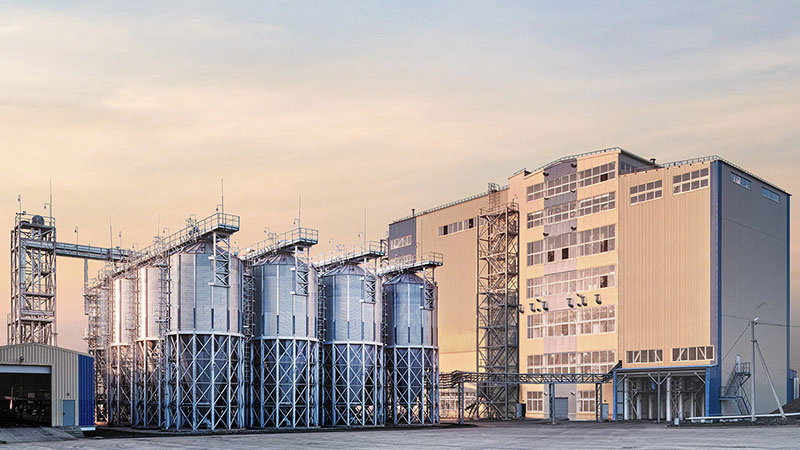
At RICHI, we go beyond project completion. With RICHI Servicee, we’re your dedicated partners in success. Count on us for expert guidance, minimal downtime, and optimized productivity. Choose RICHI for unmatched service and support.
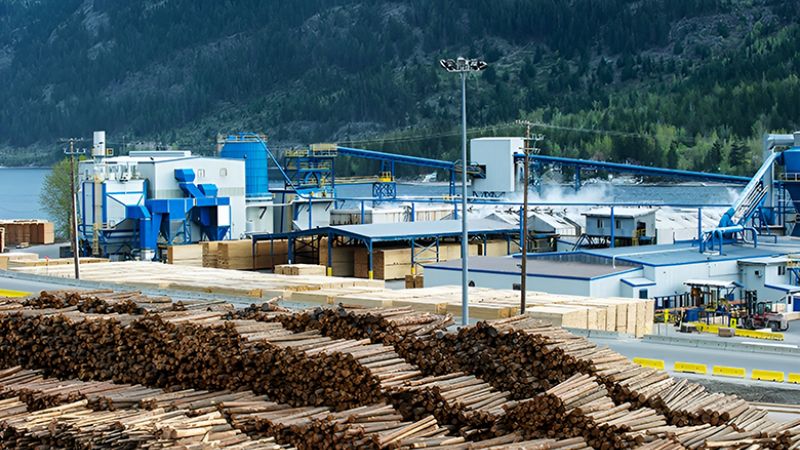
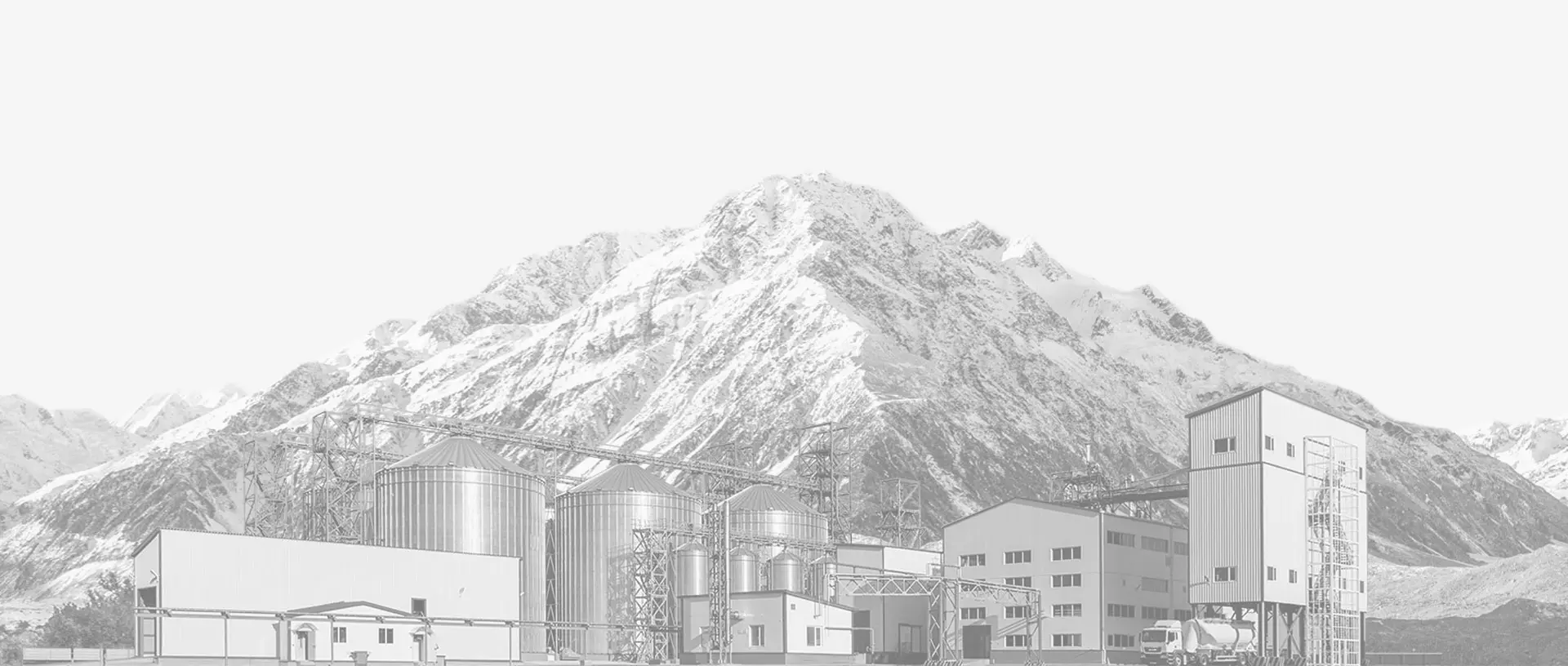

Meet global product demands and quality standards with industry-leading pellet plant design, engineering, equipment, and construction services for pellet processors.
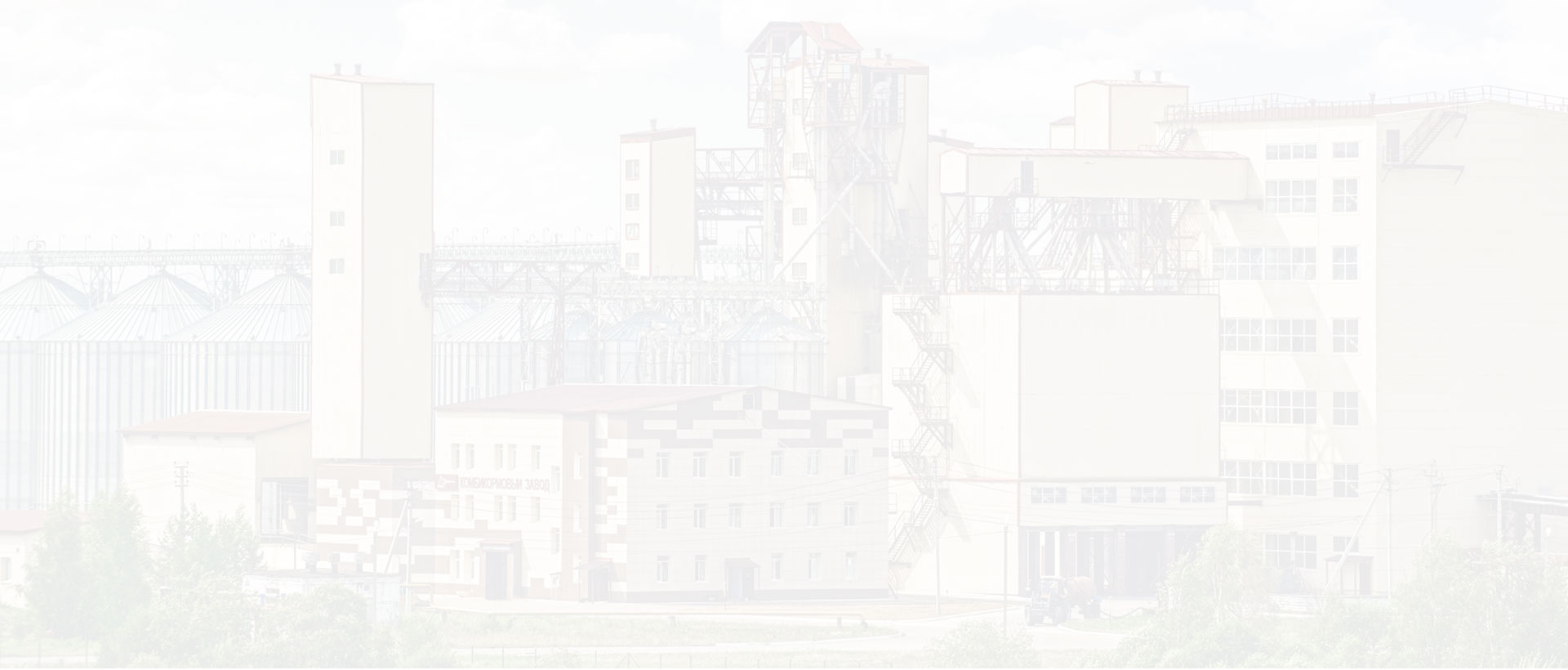
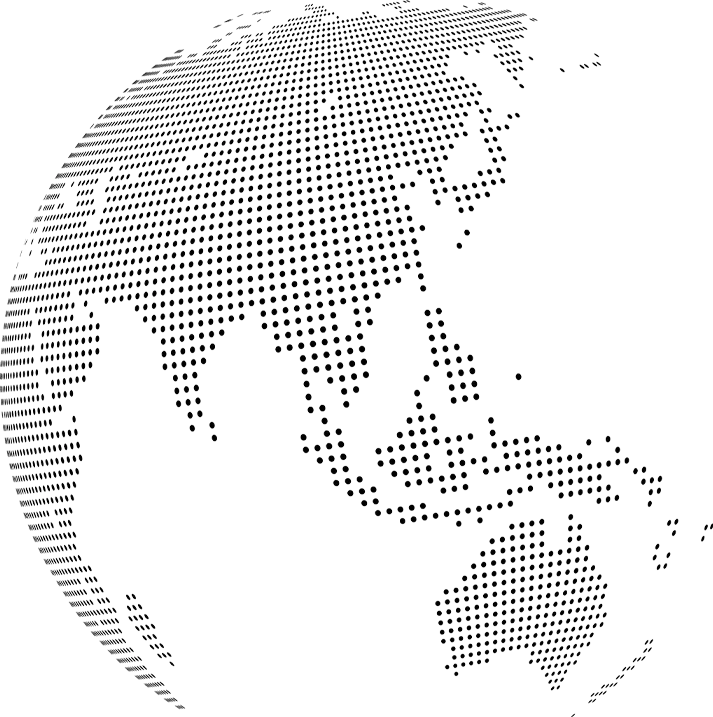
Your Partner Beyond Project Completion
2000+ cases
RICHI is the leading designer, manufacturer and builder of pellet plants in the world, completing over 2000 projects in 140 countries across 6 continents.
Read More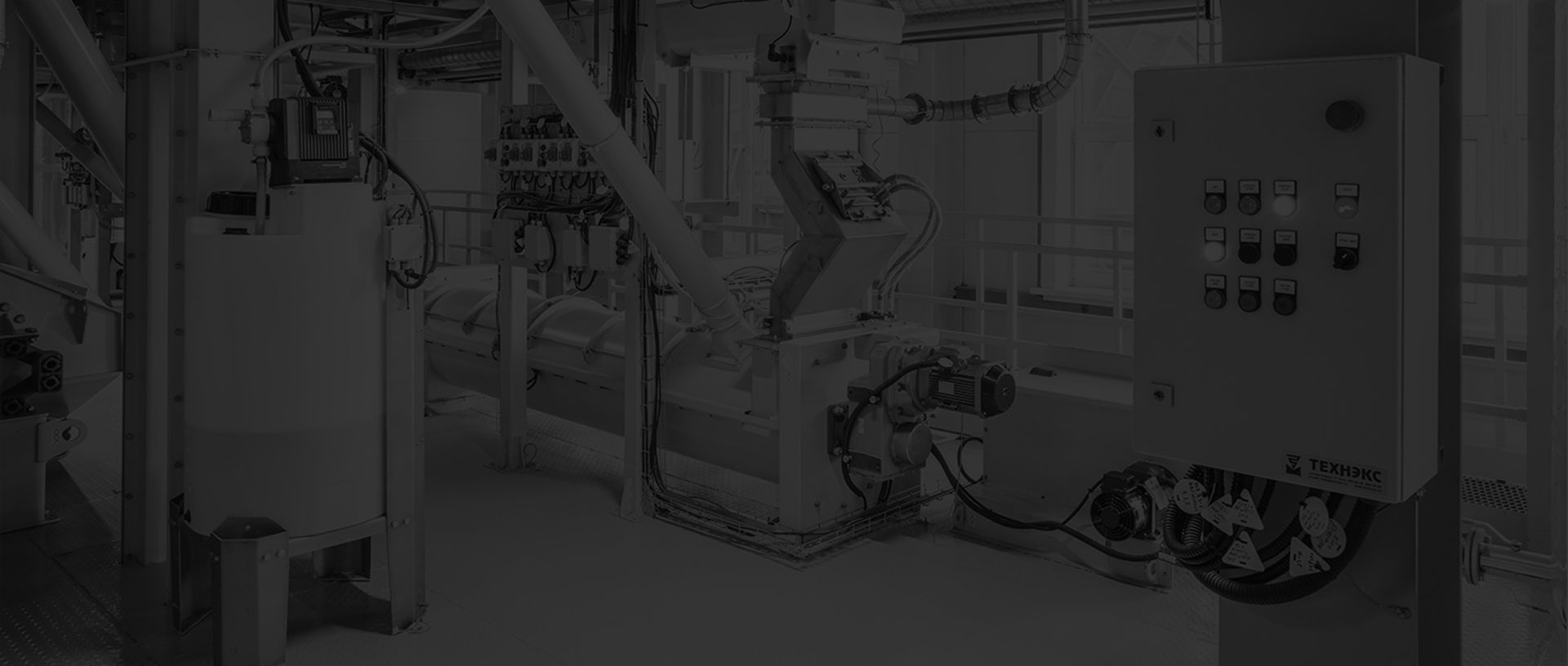
Increase plant productivity, profitability, and safety by integrating high quality equipment into your pellet production line. Over the years, RICHI has become China's top pellet equipment manufacturer. At the same time, RICHI has established valuable partnerships with the world's leading component and raw material manufacturers to bring you the best there is in technology, automation, and efficiency in pelleting plant machinery.
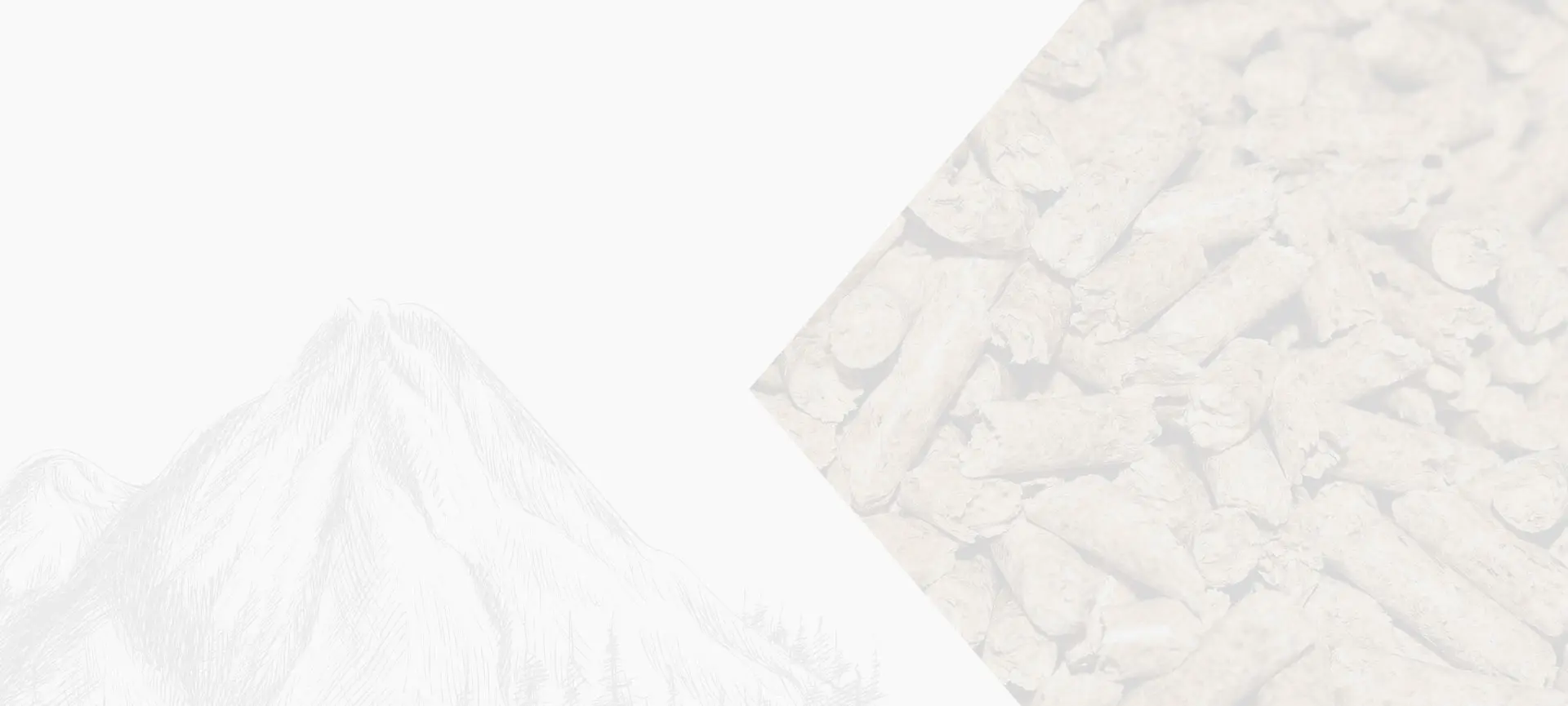
For nearly 30 years, RICHI has been providing best-in-class pellet plant equipment and services to clients across a variety of industries, sizes, and needs. We pride ourselves on the knowledge and skill that each team member possesses – from our technical sales team to our process design engineers. You can count on RICHI Machinery to take your operation to the next level of innovation, quality, and success.
Need help with your pellet manufacturing plant project? Contact us today.
ANIMAL FEED
BIOMASS
WOOD
ORGANIC FERTILIZER
AQUA FEED
CAT LITTER
MUNICIPAL WASTE RECYCLING
SPECIAL PELLET PRODUCTION
RICHI Machinery continues to deliver world class pellet mill equipment, pellet plant engineering and project solutions that add value to our customers in the animal feed, wood waste, agriculture waste, organic fertilizer, cat litter and special pellet products industries. Throughout the years, we RICHI Machinery have built strong brand, becoming industry-leading pellet machine manufacturer. We value integrity, promise quality, and prioritize your success.
Learn MoreWith our expert team, we precisely implement your process engineering requirements in pellet mill and pelletizing plant systems. No matter which industry you’re in – we understand your needs and deliver solutions that meet the highest standards.
At RICHI, quality comes first. Our pellet making machine and related pellet line equipment undergo rigorous quality controls to ensure they meet the highest standards. Rely on products that are durable, safe, and efficient.
With decades of experience in pellet machine and pellet production line production, we have earned a reputation as a trusted partner in various industries. Our expertise allows us to cover a wide range of applications.
Not only do we offer premium pelleting equipment, but we are also experts at designing, building, installing, and maintaining facilities from the ground up. Our expertise is within pellt plant process design, discovering the most efficient, productive, and profitable way to handle your materials in an end-to-end cycle.

Keeping in touch with us is an effective way to solve all your problems. If you have any needs or questions, please leave your contact information, then RICHI technical consultants will send design, quotation, videos to your mailbox. You can also contact us directly via WhatsApp: +86 13838389622
Copyright©2015-2024 by HENAN RICHI MACHINERY CO., LTD. All rights reserved.